Hi together,
I came back from Milan Design Week Thursday night and spent my weekend fully dedicated to self-care. To be fully honest — this year felt extremely overhyped and rather underdelivered. Many exhibitions were heavily promoted in advance, but in the end, the presentations were often disappointing. And the lines? Even more insane than last year — I’m simply not queuing for 1–2 hours. Still, some well-known designers and brands were praised for their exhibits, which really made me wonder: did people genuinely find them great because it was XXX, or were those positive reviews somehow incentivized?
This morning, I read the beginning of The Stanza newsletter, and I just had to share it, I couldn’t agree more with this:
“The fact that each big fashion brand had lines around the block comprising mostly people who truly do not care about the art and just want cheap and free brand merch to post on their social media as a signal make it hard for these brands to be credible to a discerning audience. Since when was it about reaching for the highest number of social media impressions and not about reaching the right audience that can move the revenue needle for you?” via The Stanza
I’ll just leave it at that — curious whether this kind of feedback will be heard and if some positive changes might follow next year.
Now, on to the good stuff. What I did enjoy this year: a growing number of brands and studios focused on multi-sensory installations — engaging scent, floor textures, sound, and haptics. In a time where everything is instantly shared on social media, this approach gives people a real reason to visit in person. And let’s be honest: how a brand makes you feel is what stays with you. I believe there’s so much untapped potential here for the future.
So after seeing countless exhibitions and visiting Euroluce / Salone del Mobile, I asked myself: which brands and pieces do I still remember clearly without looking at my pictures — and why?
On top of all of them: Romantic Brutalism by Visteria Foundation
Curated by Federica Sala with a stunning exhibition design by Zuza Paradowska (PARADOWSKI STUDIO) it featured 23 Polish creatives under the newly founded Visteria Foundation. The show combined raw materials like steel or wood with soft, almost poetic lace fabric in appreciation for craftmanship. It was not just beautiful – it was emotional and full of contrasts: brutalism met folk, nature met post-nature, tradition met something futuristic. I saw it on my very first day, and nothing else topped it. For me, this direction holds huge potential: mixing soft, poetic, floral details with massive, bold elements to break the look.






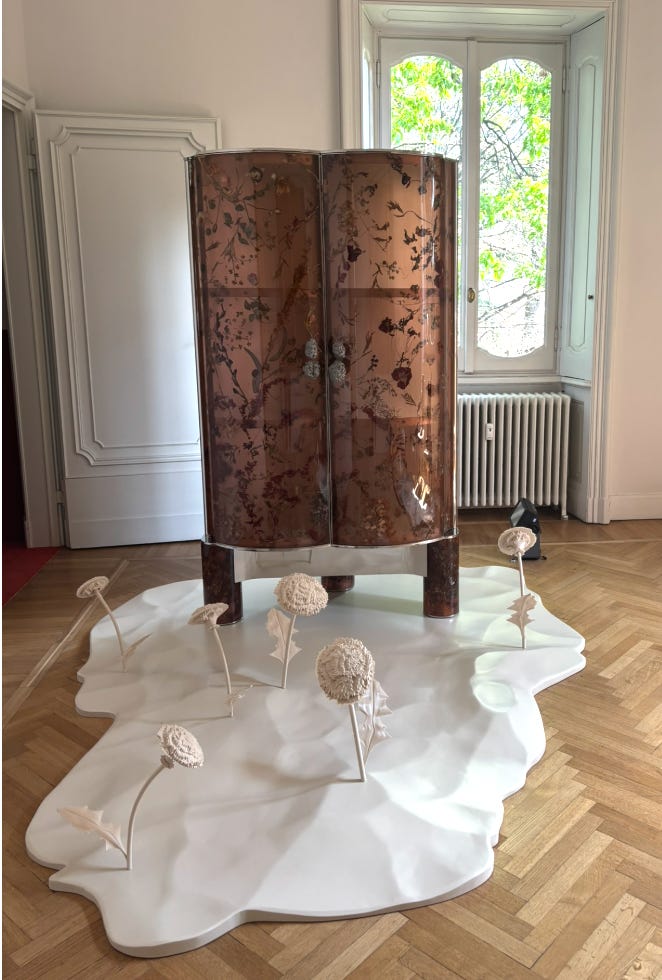

BOON ROOM
Last year, their Milan location felt way too commercial and simple for their very contemporary pieces – but this year was so good! The location finally set the pieces into the right context, and as a visitor, you even discovered the basement – almost crawling through a narrow passage to explore the last room. I loved the bold orange as a strong color pop in contrast to the many dark pieces. It finally felt like the presentation matched the personality of their pieces like it is every time in their permanent Paris space.




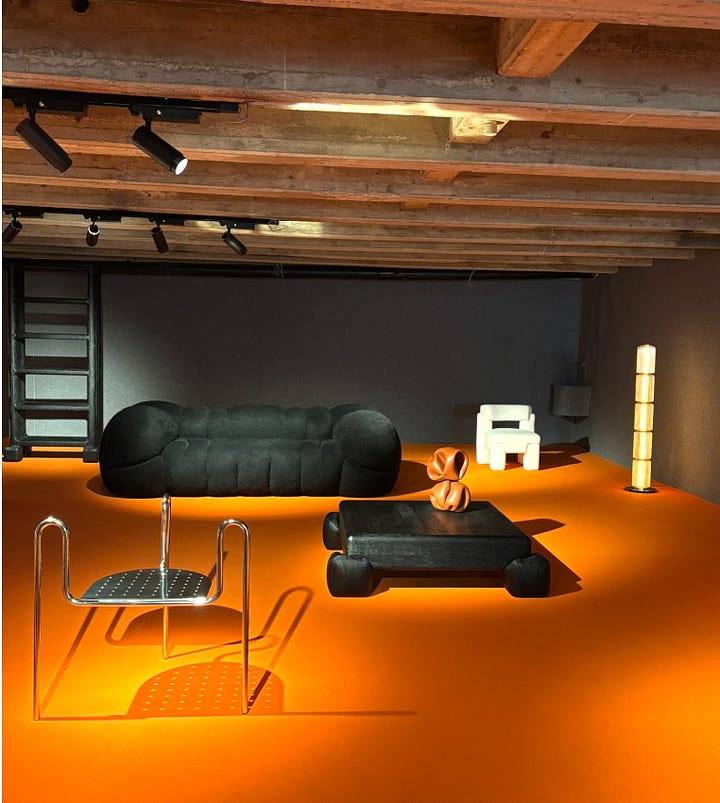
LRNCE
As I mentioned in my Milan Watch-Out list, I was really excited to see her very first furniture pieces. I expected the space to be bigger – but in the end, I loved every single piece she showcased. She did such a great job translating her brand identity, design language, and Moroccan heritage into furniture. It felt truly special – all manufactured with local suppliers in Morocco, which she’s actively supporting further. I really appreciate that.
We even met her in person, which added so much value – hearing her speak about her vision brought the whole experience to life.
I mean – the chair with the loose threads? Imperfections beautifully integrated. The mosaic of marble? A stunning appreciation of craftsmanship at its best.


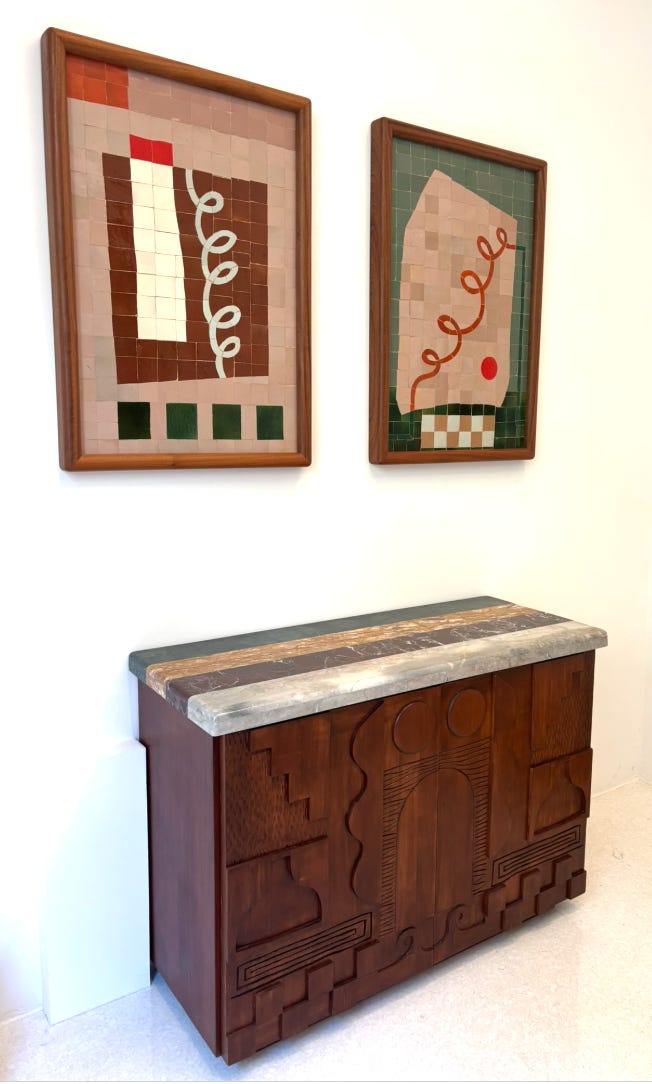

Gohar World
Gohar World released a limited number of bookable slots shortly before the event to experience their brand world—both releases were fully booked within five minutes. After participating in Alcova last year, this marked their first time presenting in their own dedicated space. The apartment of PS Agency founder Michaela Pelizzari was an absolute dream and the perfect setting.
I loved that only five people were allowed in at a time, creating an intimate atmosphere. The Gohar World products were thoughtfully integrated with numerous other details, making the brand activation feel incredibly natural - very well done!



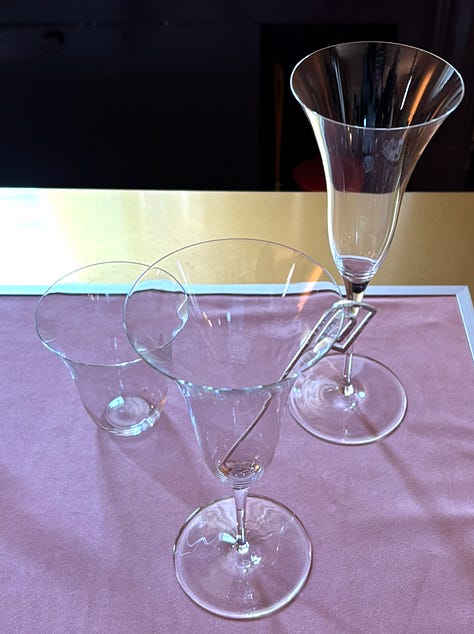


6AM Glass - Two-Fold Silence
For their debut the choice of location – Piscina Cozzi, a historic public swimming pool with old travertine cabins and a raw, aged charm – couldn’t have been better. Their exhibition felt like a hidden world. The smell of burning Palo Santo, ambient electronic music playing softly in the background, and the quiet atmosphere made it a true sensory experience.
You strolled through the space, discovering the Murano glass pieces one by one – all in strong contrast to the rough-edged, timeworn setting. This contrast really made their work stand out. It didn’t feel staged but rather poetic and spontaneous.





Yves Salomon x Pierre Marie
The touch of these suuuper soft cushions really stuck with me, especially in combination with the stunning colors and patterns, all perfectly showcased in the character-filled building. I also loved how the large sheeps' shearling was on full display. It’s the official debut of Yves Salomon’s in the interior design world, with an exclusive collection of shearling intarsia pieces designed by the talented Pierre Marie. Thousands of pieces were sewn together by hand - again craftmanship in full focus.




Laboratorio Paravinicini x Ruby Mary Lennox - Jardin à l’italienne
Visiting the Laboratorio Paravinicini workshop was a true highlight—watching the women carefully painting the ceramics with such delicate, intricate patterns was fascinating. The launch centered around the new “Jardin à l’italienne” collection (by the way, the garden theme was something we saw pop up quite a bit this year). These objects printed on the plates were then transformed into a botanical installation by Ruby Mary Lennox, creating a beautfiul connection between the craftsmanship and nature.




Lavazza - Source of Pleasure
I decided to mention Lavazza because I found it disappointing that topics like sustainability and regenerative materials were largely overlooked. However, they did present their innovative coffee capsule system, Tabli, made 100% from coffee with zero plastic. I appreciate this, as coffee capsule systems remain a popular and convenient solution for quick coffee at home.
For Milan Design Week, Source of Pleasure, a large-scale installation designed by Brazilian architect. Juliana Lima Vasconcellos featured a circular structure enveloped in coffee-colored materials, creating an immersive, multi-sensory experience.
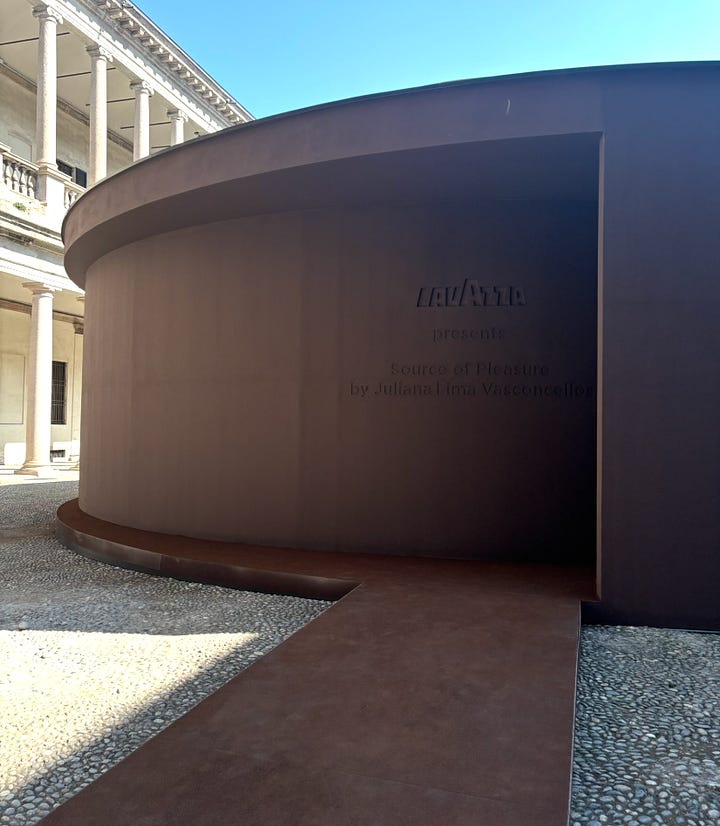
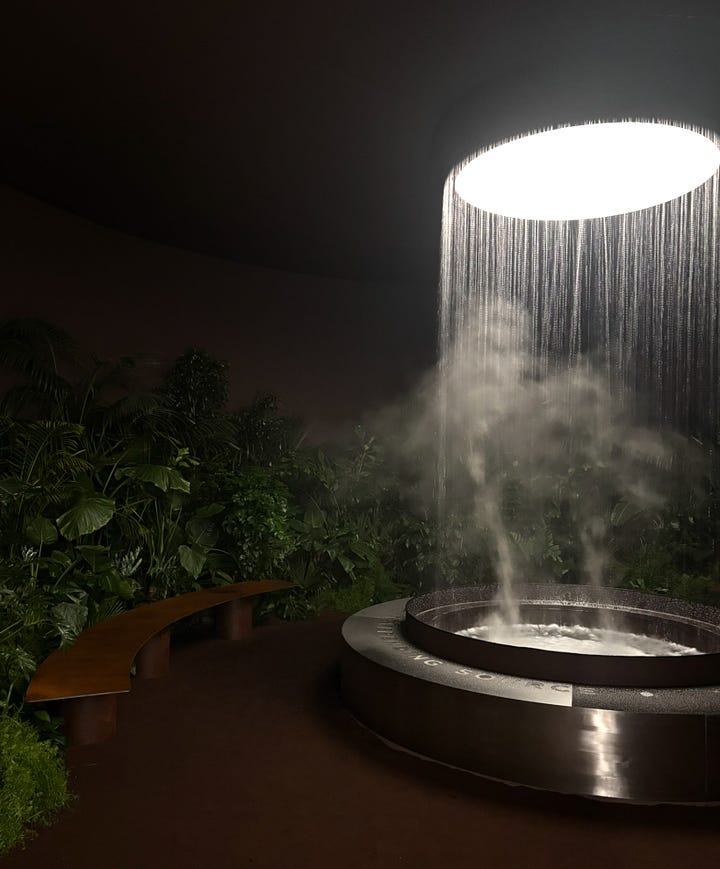


Studio David Pompa - Materia Mexico
One of the main reasons I wanted to visit Euroluce this year was to check out Studio David Pompa, and I wasn’t disappointed. They really brought Mexico to Milan, not just through their incredible lighting designs, but by creating an experience that celebrated the country’s rich craftsmanship. The space was divided into different sections, each one showcasing a unique material. It felt like a sensory journey through the heart of Mexican craftsmanship. They also had a material bar with raw materials from Mexico, served delicious Mexican food and drinks, and shared interesting insights about Mexican history while introducing their new lighting models. It was authentic, engaging, and a great presentation.





Of course there were multiple other single pieces I liked or also as expected big brands like Tacchini or CC-Tapis that were great - but the above mentioned definitely stood out to me. To find 3 short conclusions to finish this:
Sensory driven experiences: Brands are embracing interactive and sensory-driven experiences, creating deeper connections with visitors. This should even be explored further for the future
Craft with Character: A continously growing appreciation for handwork and local materials brought soul into many of the presentations.
Emotional Connection First: The focus is heading more towards creating emotional and memorable experiences through design.
What really resonated? When design wasn’t just about looks, but about where it came from. Authentic stories made the difference.

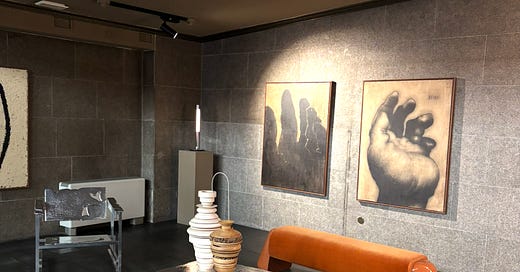


I love your take. Was it your first time going?